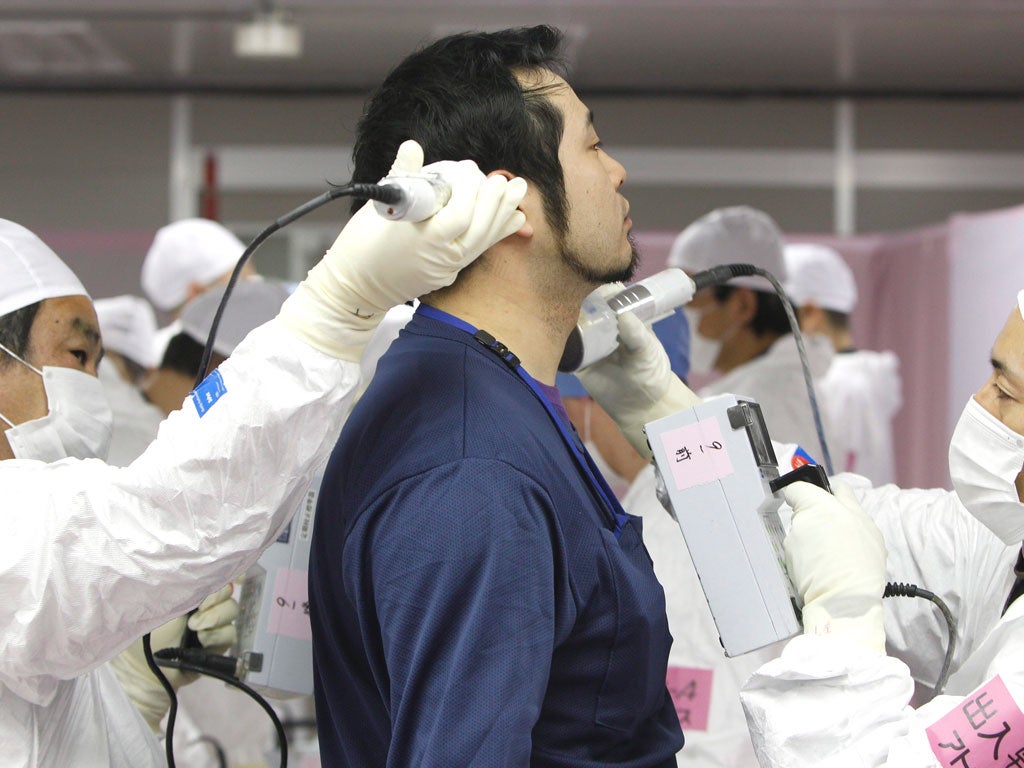One year on, Japan is still feeling the heat
David McNeill reports from the damaged Fukushima Daiichi plant

The journey to Fukushima Daiichi begins at the border of the 12-mile exclusion zone that surrounds the ruined nuclear complex, beyond which life has frozen in time. Weeds reclaim the gardens of empty homes along a route that emptied on one night almost a year ago. Shop signs hang unrepaired from the huge quake that rattled this area on 11 March, triggering the meltdown of three reactors and a series of explosions that showered the area with contamination. Even birds have deserted this area, if recent research is to be believed.
The reason is signalled by a symphony of beeping noises from dosimeters on our bus. As we drive with a party of Japanese journalists through a police checkpoint and into the town of Tomioka, about nine miles from the plant, the radioactivity climbs steadily, hitting 15 microsieverts per hour at the main gate to the nuclear complex. At the other end of the plant, where the buildings of its three most damaged reactors face the Pacific Ocean, the radiation level is 100 times this high.
Inside the plant's emergency co-ordination building, the air is filled with the sound of humming filters labouring to keep the contamination out. Hundreds of people work here. A large digital clock showing the current radiation reading inside the building dominates the wall of the central control room, where officials from Tokyo Electric Power (Tepco) toil away.
"Our main challenge now is to remove the nuclear fuel from the reactors," says Takeshi Takahashi, in his first interview since he took over as plant manager. He looks exhausted but says he is satisfied with the progress being made in bringing the plant to "a state of cold shutdown", meaning radiation releases are under control and the temperature of its nuclear fuel is consistently below boiling point.
The term is controversial. Engineers have only a rough idea of where exactly the melted fuel lies inside the damaged reactors, or of its exact state.
We are told to wear our full-face masks for the climax of the visit – a tour of the six reactors. Thousands of men worked through last year's summer heat in this protective gear, struggling to clear debris and cool the reactors.
Some of that work is clear on site. The concrete building housing reactor 1, blown apart in the first explosion on 12 March, is now completely covered with a tarpaulin to contain its radioactivity. As our bus drives past the building, the beeping dosimeters climb to 100 microsieverts an hour. But as the most badly damaged reactor, 3, looms into sight, it gives off a startling reading of 1,500 microsieverts.
The state of reactor 2 sparked some panic last week after Tepco reported that the heat of the fuel inside was climbing. "We've identified the problem as a broken thermometer," Mr Takahashi says, adding: "I'm terribly sorry to everyone for causing so much concern." Mr Takahashi says he is motivated above all by one thing: "We will try to allow people to return to their homes as early as possible."
It is a mammoth task. Japan's government has admitted that dismantling the reactors and its 260-ton payload of nuclear fuel will take up to 40 years. Many believe the government and Tepco will eventually be forced to recognise that the people who fled from this plant a year ago may not return for decades. In the meantime, the work at Fukushima Daiichi goes on. And on.
11 March At 2.46pm a magnitude-8.9 earthquake strikes Japan's north-eastern coast, triggering a devastating tsunami and a series of aftershocks.
12 March A state of emergency is declared. About 170,000 people are evacuated from a 12-mile zone around the Fukushima plant.
17 March Japanese helicopters dump tons of water over the plant in an attempt to cool reactors.
22 March Abnormal radiation levels detected in tap-water, vegetables, milk and fish.
22 March Japan expands the exclusion zone around the plant, and asks a further 130,000 residents to evacuate.
30 June Radiation contamination is found in 10 children's urine samples.
19 July Transport of beef from Fukushima is prohibited, but a crisis ensues after it emerges that cattle fed on contaminated hay has been distributed nationally.
29 September
Core temperatures for all three damaged reactors dip below 100C for the first time.
28 October
The plant released twice as much radioactivity than originally thought, a report by the Norwegian Institute for Air Research finds.
27 January
The Japanese government had a secret plan to evacuate everyone living within 155 miles of the plant should the situation have spiralled out of control two weeks after the tsunami, it emerges.
3 February
Researchers working around the plant say bird populations there are dwindling.
Join our commenting forum
Join thought-provoking conversations, follow other Independent readers and see their replies
Comments
Bookmark popover
Removed from bookmarks